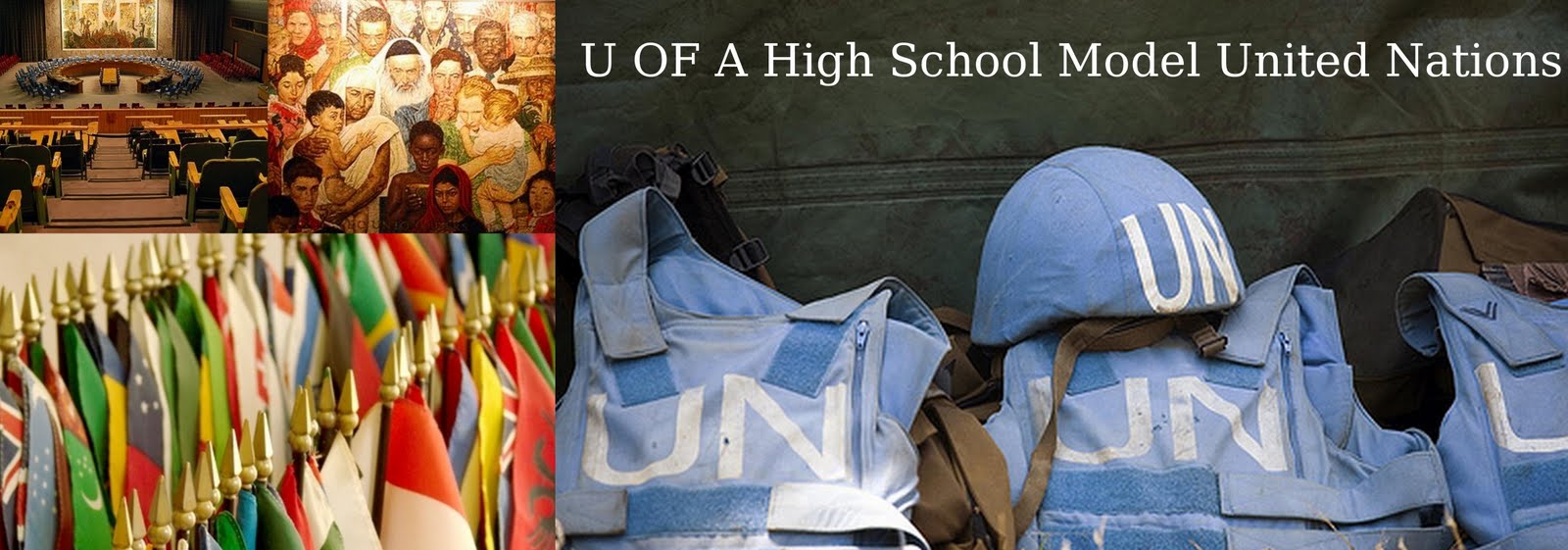Hey delegates,
So let’s take a moment to think about arms shipments to non-state actors as you guys research your position papers. It might be relevant, it might not be - poli sci majors can’t always promise relevance and general usefulness to society, unfortunately :(
One of the most basic definitions of the state comes from Max Weber as the holder of a “monopoly on the legitimate use of force” within its borders. From a pragmatic standpoint, whether you’re talking about a repressive dictatorship or a liberal democracy, it’s sometimes preferable for the state to maintain this monopoly as a means to ensure stability. Even when they’re the most awful regimes in the world, when the state loses its only bargaining chip (coercion) and non-state actors proliferate (think the FARC in Columbia, or even the LRA), armed to the teeth and entirely unaccountable in the ways they use military force – but while they now have the means to defend themselves, civilians don’t. The tenuous military situation is extremely conducive to arms proliferation (conflict zones = high demand for weapons) and high civilian casualties as ordinary people are caught in the crossfires.
This is why it’s extremely problematic when states ship weapons to non-state actors even when these non-state actors are “good people who ask nicely and promise not to use the arms for bad things” because small arms ALWAYS destabilize the situation. No ifs, buts or whens. Philosophically, however, delegates are going to have to grapple with this in the context of the Arab Spring: do we ship arms to unknown rebel groups fighting against dictators?
When considering the question of arms shipments in general, I think we need to deal with all the cards on the table. There are often ulterior motives (namely economic and political gain) that accompany arms shipments, yet there can be unforeseeable long-term consequences.
What’s in it for me? China: weapons broker of the world
Trading arms – to anyone – is a hugely lucrative business, especially with natural resources in play. China plays a HUGE role in arms transfers as a major supplier to the Horn of Africa, supplying weapons to African governments in exchange for rights to natural resources needed to sustain the pace of their economic development with no other strings attached. To give you some idea of the scope of their nefarious doings, here are some of the conflict regions China’s shipped to:
- Sudan during the civil war
- Darfur (ongoing crisis)
- Rwanda
- Somalia (ongoing crisis)
- Côte d’Ivoire (civil war)
- Ethiopia and Eritrea (during war)
- East Congo
- And more…
From The Jamestown Foundation:
- “China delivered by value about 13 percent of all arms to Sub-Saharan Africa; this percentage increased to almost 18 percent between 2004 and 2007.”
Cross-border proliferation isn’t just a problem that occurs with illegal trafficking – sometimes states stand to profit hugely off of licit trades. In the case of the Arab Spring, they could even reap the benefits in the future by selectively backing groups early on to form political alliances (like Qatar) or later negotiate for resource dividends (just a thought for now).
For delegates, if you’re going to pursue a moratorium on arms shipments to conflict areas, it only works when everyone is likely to abide by them. Yet considering that arms shipments are almost always counterproductive (see below), most nations choose to break these moratoriums for these reasons, and for political ones as well.
Gun diplomacy: a whole new meaning? The United States supporting allies in Somalia
As a show of solidarity and more importantly, to ward off Islamist groups on the verge of taking the country, the United States government sent arms shipments to the fragile Transitional Federal Government in direct contravention of an arms embargo adopted by the United Nations Security Council. The problem, however, is that these weapons inevitably make it out onto the market and make their way into the hands of militant groups and sometimes outside of the country itself. When the intended recipients can’t absorb the influx of arms shipments, weapons are instead sold on the open market. Small arms follow deserters or captured soldiers from the TFG, or are sold by militia members who compose the army. To top it all off, we know that Somalia is now a failed state, and that all those arms shipments couldn’t ward it off.
For the reasons above, arms-saturated, conflict-prone regions such as Somalia tend to act as transit points once new weapons flow into the region, notably to the Horn of Africa. As delegates research their foreign policies, they should keep in mind the efficacy of weapons transfers in propping up fragile governments and especially what kind of message it sends when members of the UN and the Security Council undermine circumvent their own rules.
It’s the Cold War, stupid: the hidden legacy of arms shipments
Even though the UN has been making progress on destroying weapons stockpiles from the Cold War, other issues have overshadowed the fact that there are a ton of guns drifting around in Central and Southern Asian (a former weapons corridor) from the Cold War era. If you happen to represent one of these countries, this link might be really useful to you in your research. Afghanistan, Tajikstan and other Central Asian former Soviet republics have all suffered from the proliferation of arms in their region and its links with human and drug trafficking. Everyone knows the story of how arms given to the mujahideen during the Afghan Civil War were appropriated by its offshoots, al-Qaeda and the Taliban, in other conflicts, but the region has suffered much worse. Delegates should consider how to deal with existing arms and not just how to limit the proliferation of new ones.
Phew. I guess that’s it for now. Happy researching!
Countdown to HSMUN: 24 days




No comments:
Post a Comment